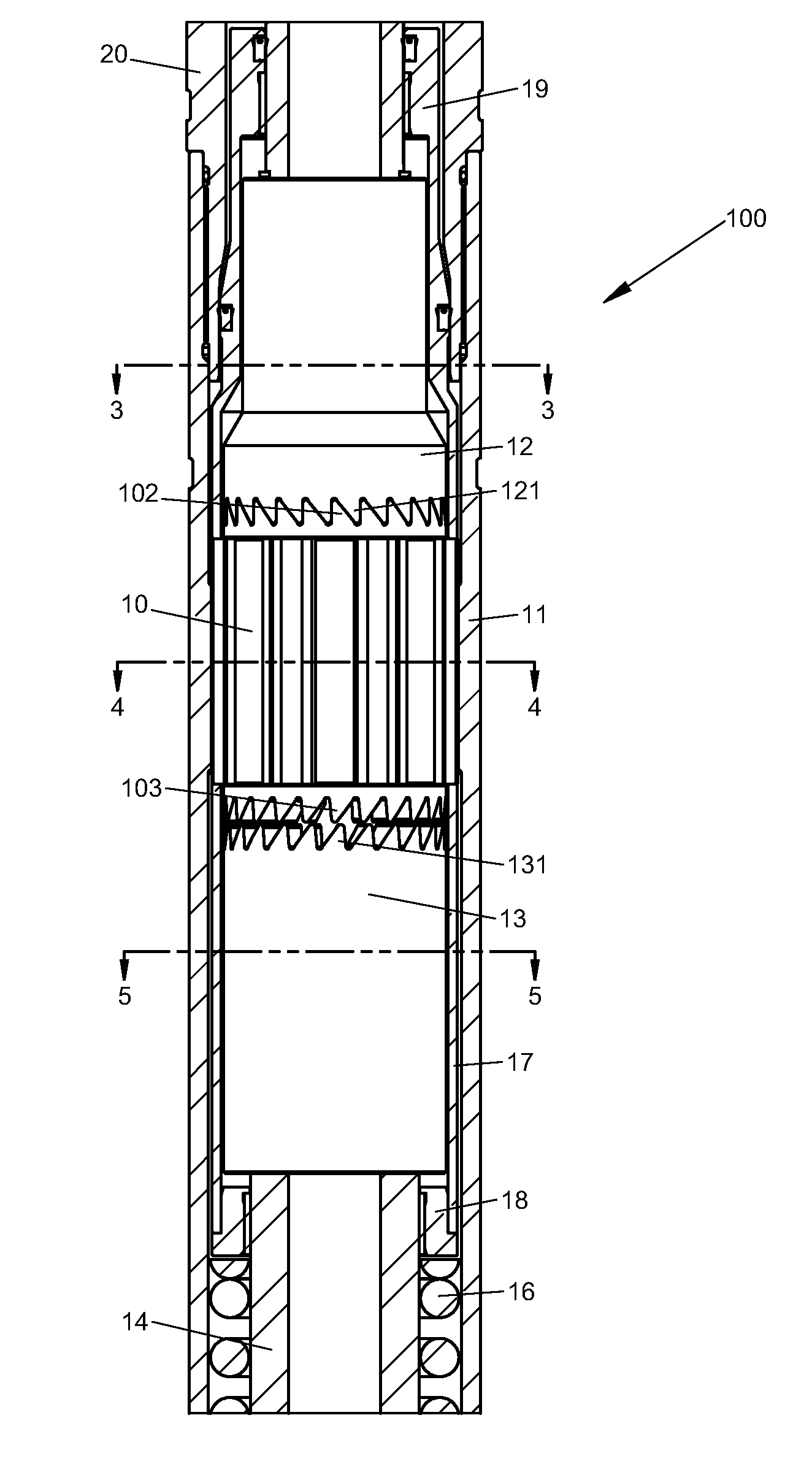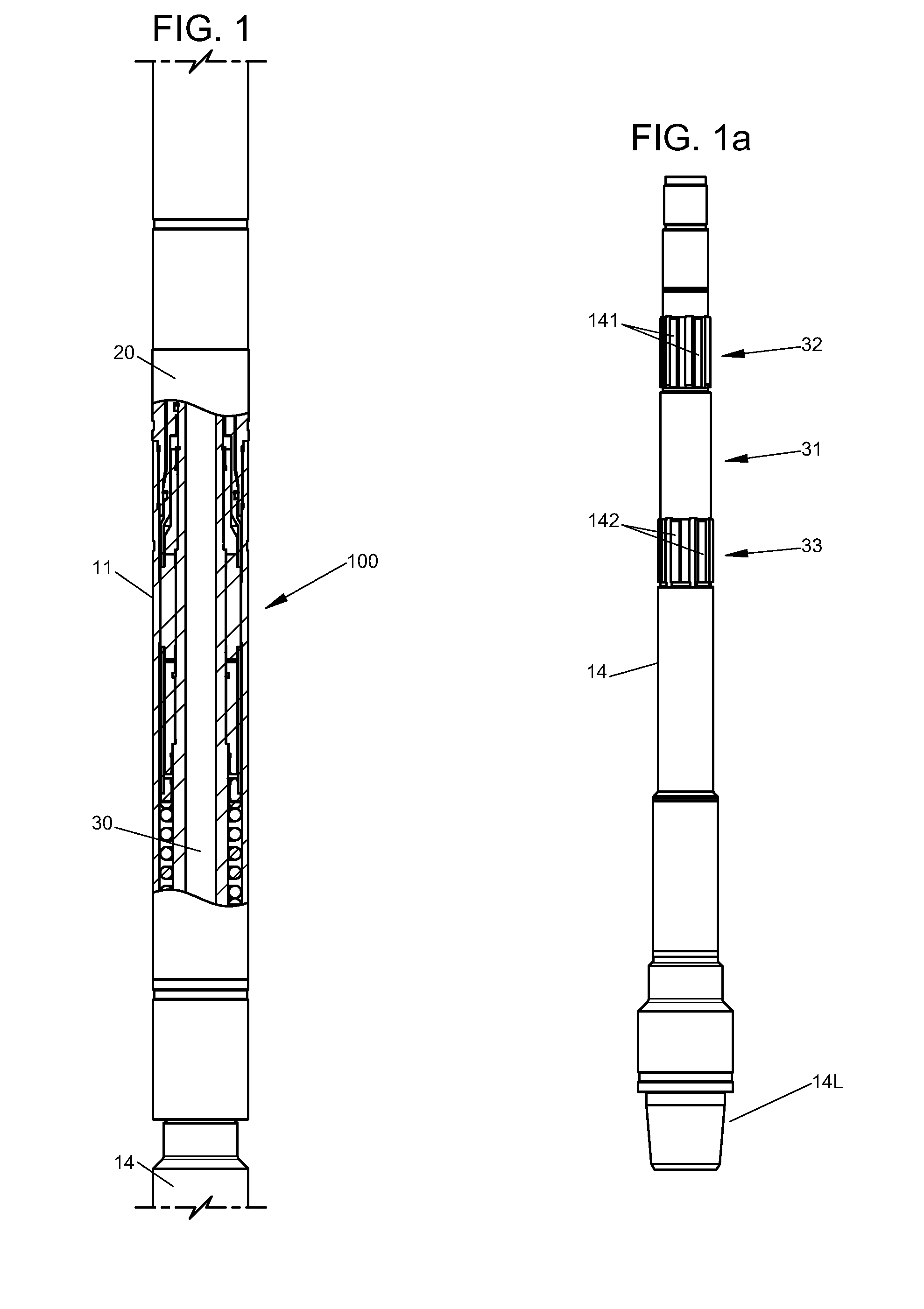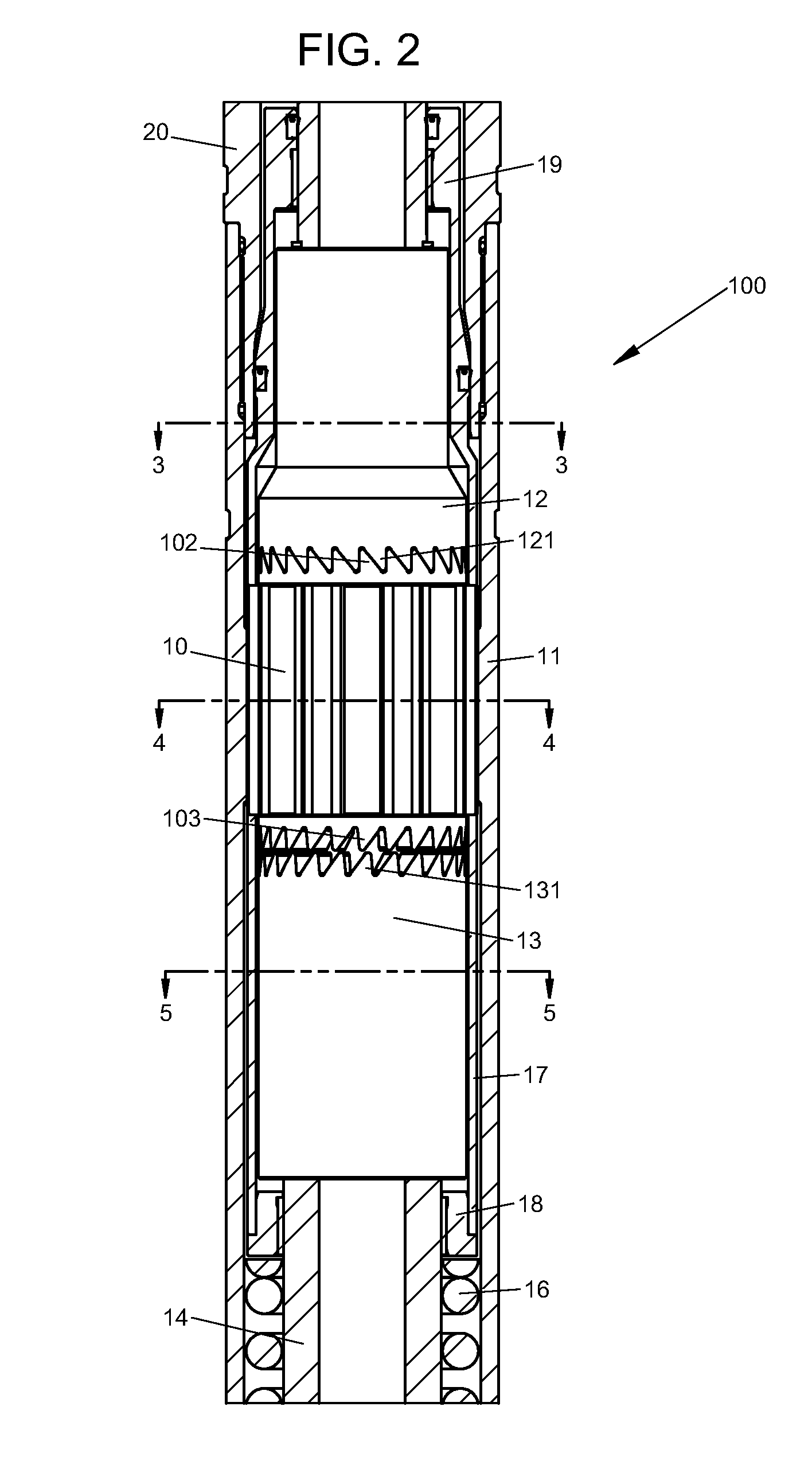Mechanism for providing controllable angular orientation while transmitting torsional load
a technology of torsional load and angular orientation, which is applied in the direction of directional drilling, surveying, and borehole/well accessories, etc., can solve the problems of complex construction and operation of devices, and the inability of devices to control and adjust orientation, etc., and achieve the effect of relieving stress
- Summary
- Abstract
- Description
- Claims
- Application Information
AI Technical Summary
Benefits of technology
Problems solved by technology
Method used
Image
Examples
Embodiment Construction
[0042]FIG. 1 illustrates an angular orientation mechanism 100 in accordance with one embodiment of the present invention, incorporated within a string of tubular elements constituting a downhole tool. FIG. 1 depicts one possible orientation of the downhole tool relative to a wellbore, with the tool comprising a cylindrical tool housing 20 (typically made up from a plurality of tool housing members) having an upper end 20U which may be coupled to the lower end of a pipe string or coiled tubing string (not shown), or to other tools or components that are coupled to the lower end of the string. For convenience, the adjectives “upper” and “lower” are used in this patent specification in reference to various components as if mechanism 100 were at all times vertically oriented as in FIG. 1. It will be appreciated, however, that these terms are used in a relative sense only, as the mechanism may be used in a variety of different orientations (such as during directional drilling operations)...
PUM
 Login to View More
Login to View More Abstract
Description
Claims
Application Information
 Login to View More
Login to View More - R&D
- Intellectual Property
- Life Sciences
- Materials
- Tech Scout
- Unparalleled Data Quality
- Higher Quality Content
- 60% Fewer Hallucinations
Browse by: Latest US Patents, China's latest patents, Technical Efficacy Thesaurus, Application Domain, Technology Topic, Popular Technical Reports.
© 2025 PatSnap. All rights reserved.Legal|Privacy policy|Modern Slavery Act Transparency Statement|Sitemap|About US| Contact US: help@patsnap.com



